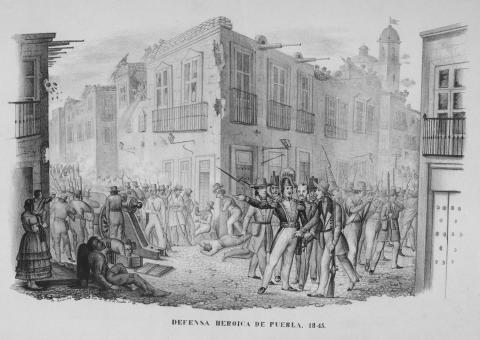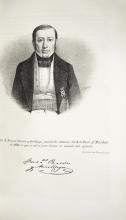Biographies | Essays | Broadsides | Correspondence | Images | Maps
The mid-1840s were a time of intense political turmoil in Mexico. In March 1845, the U.S. Congress passed a joint resolution offering to annex the Lone Star republic, prompting the Herrera regime to sever diplomatic relations with the United States. While the government in Mexico City publicly declared that a union between Texas and the United States would constitute an act of war, by the fall of 1845 the Mexican government was seeking a face-saving alternative. Privately, Herrera sought to open a dialogue with Washington, in the hopes of negotiating a settlement that would include compensation for the loss of its former province.
When Herrera's moderate policy became public, it infuriated Mexican centralists and federalists alike, who condemned the regime's course as one of appeasement. The government's policy was further undermined by the Polk administration in Washington, which had already sent an army under Zachary Taylor to the south Texas frontier, inflaming Mexican public opinion. Conservatives led by General Mariano Paredes y Arillaga were soon conspiring against the regime. Paredes seized power on January 2 1846, vowing to reassert Mexican sovereignty over Texas as far as the Sabine River. (For more information, see "Mexican Domestic Politics: An Overview")


